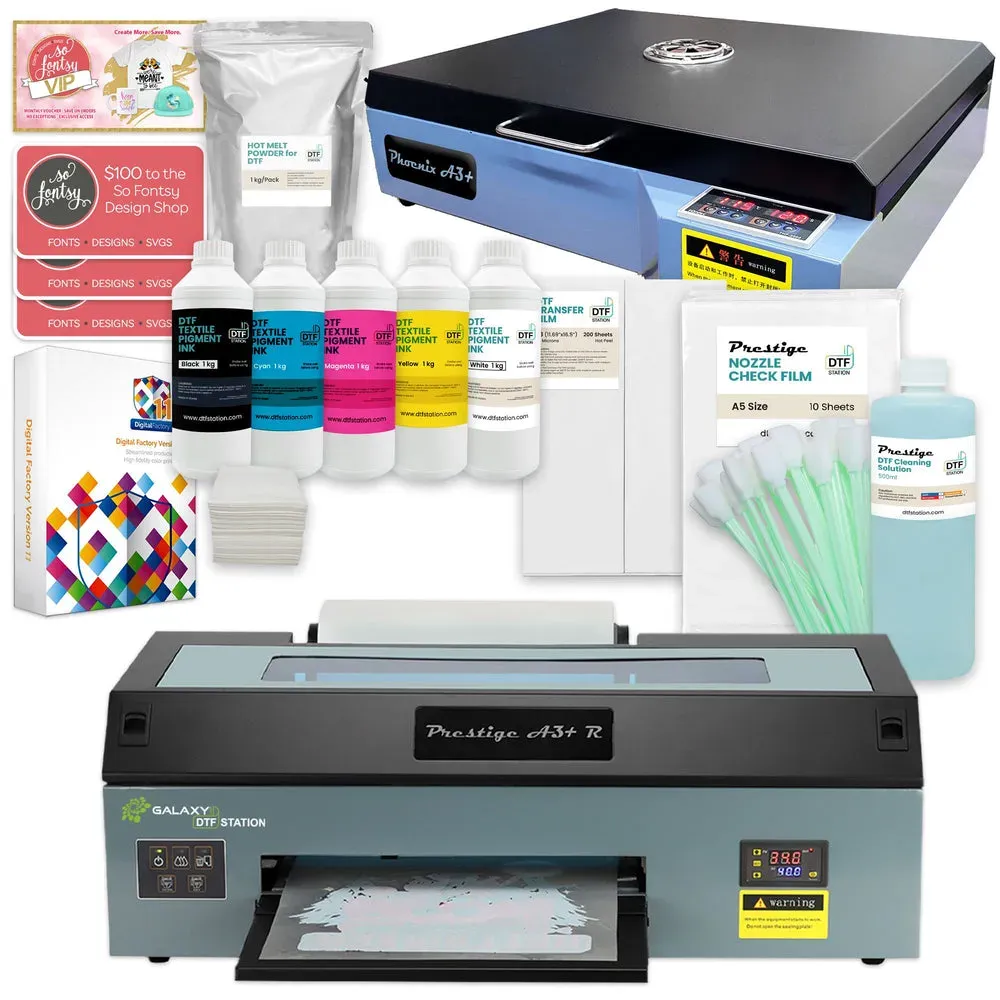DTF printers are quickly becoming the go-to solution for creative professionals looking to elevate their fabric printing game. With the remarkable ability to deliver vibrant, high-quality designs, these machines are transforming the apparel industry. In this comprehensive guide, we will not only identify the best DTF printer options available but also delve into essential factors to consider when purchasing, such as print quality and speed. By understanding the ins and outs of DTF printing, including tips from expert DTF printer reviews, you’ll feel more confident making a buying decision. Whether you’re just starting or refining your printing business, this DTF printing guide will assist you in selecting the ideal printer tailored to your needs.
Direct-to-Film printing, often abbreviated as DTF printing, is revolutionizing the way custom designs are transferred to fabrics. As a modern and innovative approach to creating eye-catching apparel, it allows for detailed and colorful prints that stand out in the crowded fashion market. When exploring the world of DTF technology, you will encounter numerous options and features, crucial for achieving optimal results. Understanding terminologies like film transfer systems and specialized ink types can significantly enhance your printing capabilities. This exploration not only guides you in choosing the perfect printer but also helps clarify the best practices for maximizing the potential of your fabric prints.
Understanding the Basics of DTF Printing
Direct-to-Film (DTF) printing is an innovative method that bridges the gap between traditional screen printing and modern digital techniques. It allows for the transfer of vivid, detailed images onto fabrics through the use of specialized films and adhesives, setting it apart from methods like Direct-to-Garment (DTG) printing. One of the standout features of DTF printing is its ability to deliver vibrant colors and intricate designs on various materials, making it an essential technique for custom apparel businesses.
As the industry evolves, DTF technology has gained traction for its efficiency and durability. Unlike some fabric printing methods that can weaken fibers or fade over time, DTF prints are known for their long-lasting quality. This durability ensures that designs remain intact even after multiple washes, making it appealing for those looking to produce garments that can withstand wear and tear.
Frequently Asked Questions
What should I consider when buying a DTF printer?
When buying a DTF printer, consider print quality, speed, cost of printing, ease of use, connectivity options, and the manufacturer’s support. High-resolution output and competitive speeds are crucial for vibrant designs and efficiency, while user-friendliness ensures smooth operation.
How do I choose the best DTF printer for my needs?
To choose the best DTF printer, assess your specific needs in terms of volume, budget, and required features. Popular models like the Epson SureColor F170 and Mimaki TX300P-1800 offer various advantages catering to hobbyists and industrial users, respectively.
What are the benefits of Direct-to-Film (DTF) printing over traditional methods?
DTF printing offers several benefits over traditional methods, including rich colors, greater design versatility, and durable prints. Its unique use of adhesive powders and special films sets it apart from direct-to-garment (DTG) printing, making it ideal for custom apparel.
Where can I find reviews for the best DTF printers on the market?
You can find reviews for the best DTF printers on various platforms, including specialized websites like DTF Printer Reviews, industry blogs, and printwear magazines, which provide insights and comparisons among top models.
What are the common costs involved when running a DTF printer?
Common costs associated with running a DTF printer include the price of inks, films, adhesive powders, maintenance, and electricity. While initial investment varies, understanding these costs can lead to better budgeting for your DTF printing operations.
Can I use eco-friendly inks with a DTF printer?
Yes, many DTF printers can utilize eco-friendly inks, which are increasingly popular due to growing environmental awareness. Opting for sustainable options aligns your business with eco-conscious practices, appealing to a broader audience.
| Key Points | |
|---|---|
| Aspect | Details |
| Print Quality | Aim for printers with 300 DPI or higher for vibrant designs. |
| Print Speed | Consider models that can print up to 20 shirts per hour for high-volume needs. |
| Cost of Printing | Initial costs vary from $1,200 to over $10,000; consumables should be factored in. |
| Ease of Use | Look for models with intuitive software and easy maintenance. |
| Connectivity | Ensure printer compatibility with USB, Wi-Fi, or Ethernet options. |
| Support and Warranty | Opt for brands with good customer support and warranty offerings. |
| Popular Models | Epson SureColor F170, Mimaki TX300P-1800 are recommended. |
| Industry Trends | Sustainability and customization are key focus areas in the DTF market. |
Summary
The DTF printer is at the forefront of fabric printing innovation, offering vivid colors and intricate designs that can transform the apparel industry. By understanding the key factors such as print quality, speed, and cost-effectiveness, you can confidently select the perfect DTF printer that fits your unique requirements. This market is also embracing sustainability and customization trends, enabling businesses to produce high-quality prints while appealing to environmentally conscious consumers. With the right DTF printer, you can enhance your creative projects and meet the growing demand for custom apparel efficiently.



